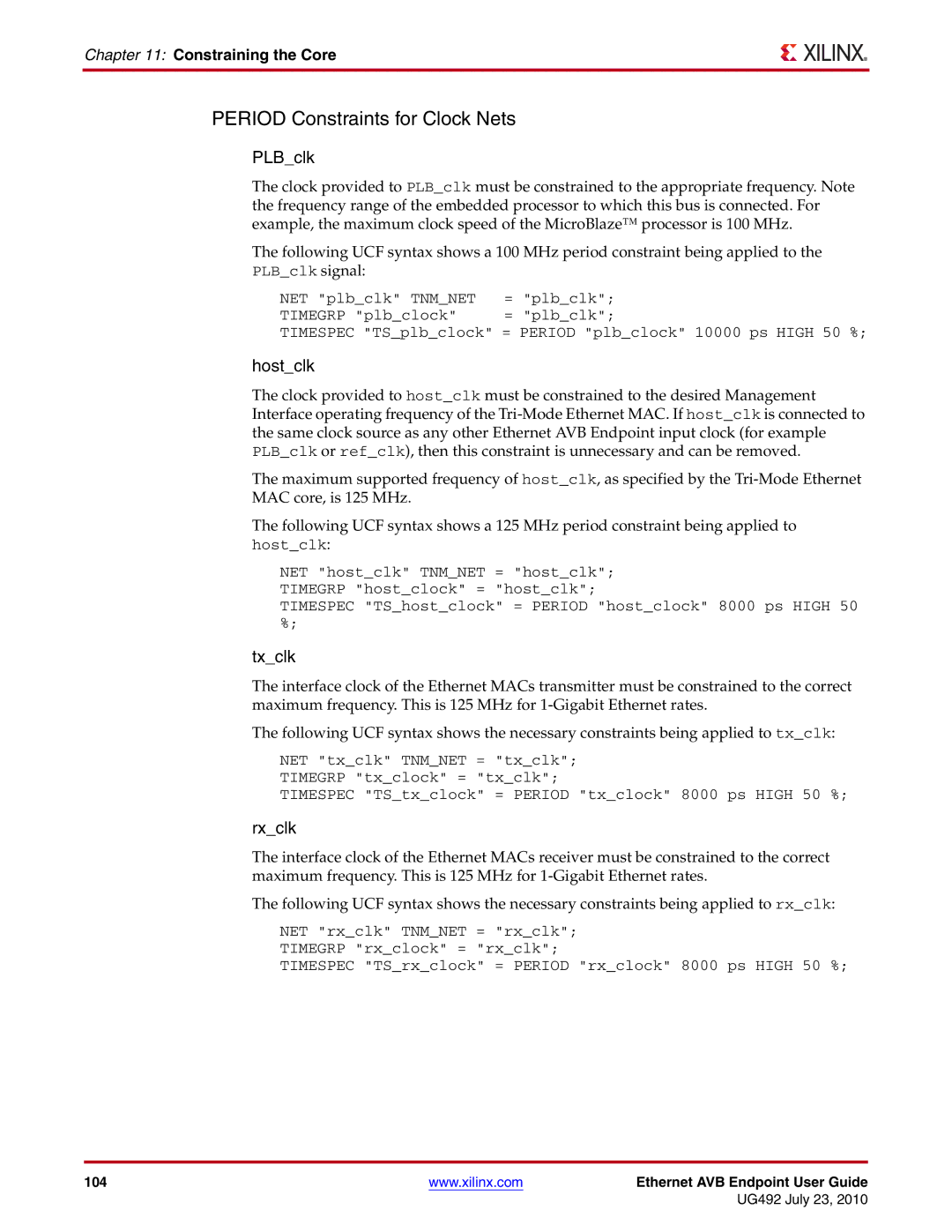
Chapter 11: Constraining the Core
PERIOD Constraints for Clock Nets
PLB_clk
The clock provided to PLB_clk must be constrained to the appropriate frequency. Note the frequency range of the embedded processor to which this bus is connected. For example, the maximum clock speed of the MicroBlaze™ processor is 100 MHz.
The following UCF syntax shows a 100 MHz period constraint being applied to the
PLB_clk signal:
NET "plb_clk" TNM_NET | = | "plb_clk"; |
TIMEGRP "plb_clock" | = | "plb_clk"; |
TIMESPEC "TS_plb_clock" = PERIOD "plb_clock" 10000 ps HIGH 50 %;
host_clk
The clock provided to host_clk must be constrained to the desired Management Interface operating frequency of the
The maximum supported frequency of host_clk, as specified by the
The following UCF syntax shows a 125 MHz period constraint being applied to host_clk:
NET "host_clk" TNM_NET = "host_clk"; TIMEGRP "host_clock" = "host_clk";
TIMESPEC "TS_host_clock" = PERIOD "host_clock" 8000 ps HIGH 50 %;
tx_clk
The interface clock of the Ethernet MACs transmitter must be constrained to the correct maximum frequency. This is 125 MHz for
The following UCF syntax shows the necessary constraints being applied to tx_clk:
NET "tx_clk" TNM_NET = "tx_clk";
TIMEGRP "tx_clock" = "tx_clk";
TIMESPEC "TS_tx_clock" = PERIOD "tx_clock" 8000 ps HIGH 50 %;
rx_clk
The interface clock of the Ethernet MACs receiver must be constrained to the correct maximum frequency. This is 125 MHz for
The following UCF syntax shows the necessary constraints being applied to rx_clk:
NET "rx_clk" TNM_NET = "rx_clk";
TIMEGRP "rx_clock" = "rx_clk";
TIMESPEC "TS_rx_clock" = PERIOD "rx_clock" 8000 ps HIGH 50 %;
104 | www.xilinx.com | Ethernet AVB Endpoint User Guide |
|
| UG492 July 23, 2010 |
